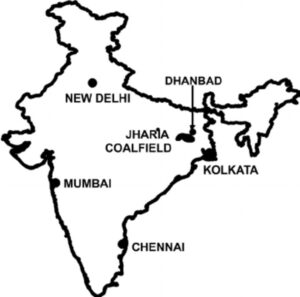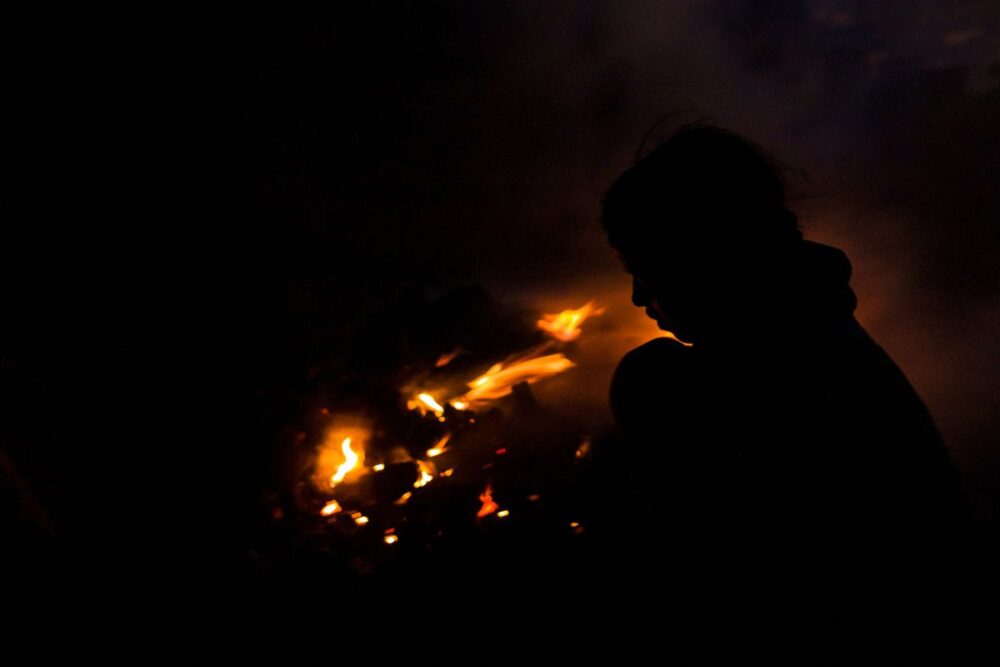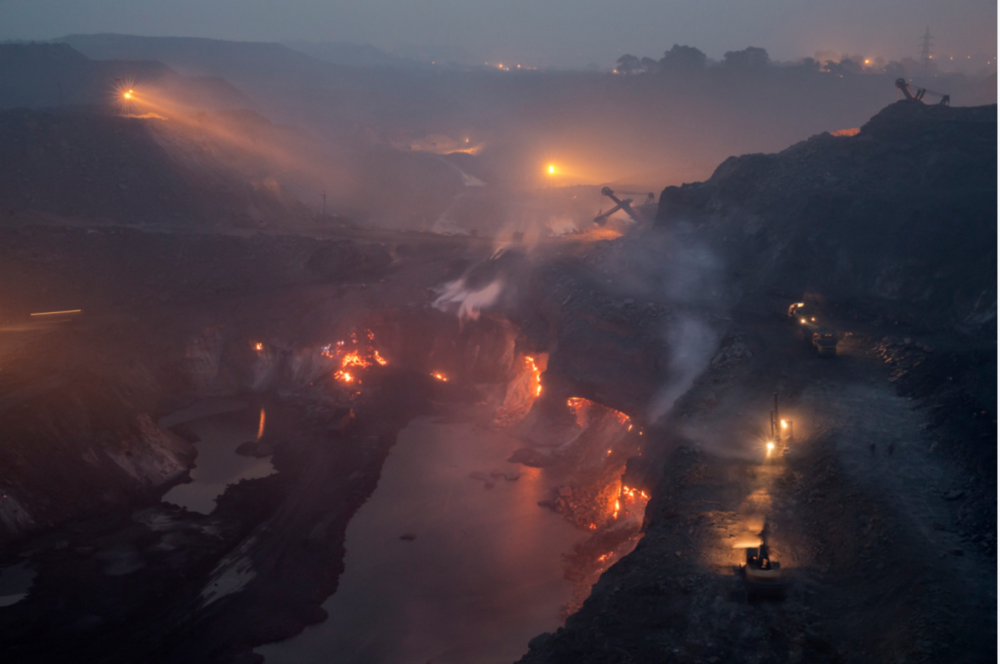“We need nature, but nature doesn’t need us.”
Jharia Sits on top of India’s largest coal reserves in Dhanbad district of Jharkhand. The only coalfield in India that produces coking coal, a prime requirement for the steel industry. An estimate of around 19.4 billion tones of coking coal worth billions.
The area has been used for mining purposes since the late 1800s. The first coal fire was recorded in 1916. Dozens of fires rage below the ground ever since, some smouldering for over a century. While Jharia is one of India’s largest and most productive coalfields, it is also home to some of the longest burning fires in the world.

WHERE IS JHARIA AND WHY THE FIRES?
Research From IIT Roorkee mentions spontaneous heating of coal as the chief cause for the occurrence of such fires.
The science behind such spontaneous combustion can be referred as “self-heating” caused by the oxidation of minerals in the exposed coal. Much of the mining is practised at the surface (opencast mining), creating a window for the open air to turn bursts into flames. flames at jharia coal mines have reached heights of 60 feet, says Glenn Stracher, a professor of geology and physics at east Georgia state college.
Located in the Dhanbad district of Jharkhand in eastern India. The coalfield is a sickle-shaped terrain and lies in the Damodar River Valley and covers over an area of 270 square kilometres with a latitudinal extent of 23°38′ N to 23°50’N and 86°07’E to 86° 30’E longitudinally. An average elevation of about 220m above mean sea level.
Nearly one-tenth of this land is now considered unstable.

PROBLEMS AND CONCERNS
The fire causes the earth to fissure and collapse, destroying settlements, causing landslides. Decades of unchecked haphazard mining without considering the protocols have brought dreadful consequences, which proves to be a curse to an estimated 1 lakh families (approximately 5 lakh people) living in the villages around.
The people of Jharia face the wrath of nature on one hand and improper, mining industrialization on the other. Whichever political party rises to power, the plight of the affected villages goes unheard. A neta has nothing to offer towards the regional development but gets enough time to play “the blame game” and make false promises.
Since it is impossible to extinguish the coal fires, BCCL, in 2008, planned to relocate the families affected to different sites, many in Belgharia and a few in Raniganj in the neighbouring state of West Bengal.
Jharia rehabilitation and development authority (JRDA) was formed for the purpose with an estimated budget of around rupees 7000 crores, but the world has never been soft, to the weak and the poor. Not more than 3000 families have been relocated.
Even to these families, issues related to livelihood erupted. Scarcity of basic amenities in their new homes, no other source of income, no provision for cattle rearing or livestock farming keep them away from being happy and satisfied.
“Being an educated and responsible citizen I will exercise my voting rights, but it will not bring any change, neither to me nor to any of the families living in the fire-affected areas under continuous fear of subsidence and the poisonous toxic fumes blowing out of the cracks”. Rajendra Paswan, a 48 years old tutor and a resident of the fire hit Mohribandh locality spoke to the telegraph.
The dust that arises from blasts in the mines makes it one of the most polluted places in the country and is even defined as the pollution capital of India.
Hospitals in Jharia report a large number of cases of tuberculosis and other respiratory problems.
“The dust particles fly and reach our houses and even on our clothes, if we keep them out in the open to dry, a layer of dust gets deposited, says another resident from the Bhuian basti, he himself suffers from bronchitis.
CAN WE FIGHT NATURE?
“Our downfall as a species is that we are arrogant enough to think we can control Mother Nature and stupid enough to think it is our job.”
More than 37 million tonnes of coal has been lost to the fires at Jharia worth billions of dollars, and a big amount remains inaccessible (blocked by the fires).
like any other coal mining area, the coalfields of Jharia has affected air, water, soil resources, topography, land use and land cover and has also led to the infamous coal fires that have remained active for over a century. These fires constitute a major cause of the disaster and have also been spoiling precious natural resource.
Regular monitoring of the area under fire the number of fires and the direction of spread of fire is therefore essential for understanding their impact.

Undergoing such hellish conditions, Jharia is indeed a tale of distress and despair.
These conditions have compelled a local journalist to prophesize that Jharia township is on the brink of an ecological and human disaster.
“Jharia would vanish in future and there would be no trace of it, fire, like a hungry demon, would engulf all of us, and pollution would only hasten the diminishing process.
Shashi Tharoor’s exotic vocabulary: 10 top unique English words he taught us





